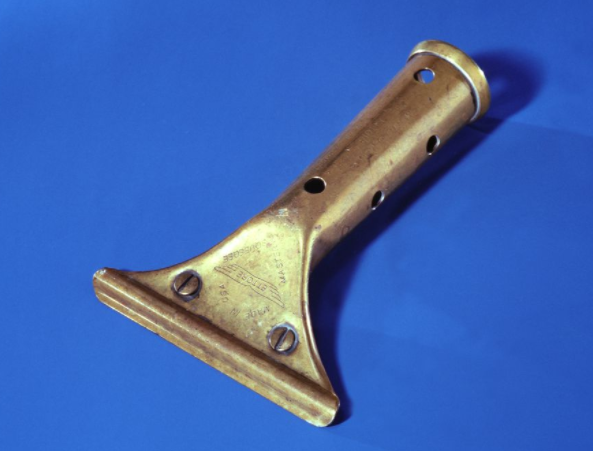The Squeegee that Saved Lives
The September 11 attacks claimed the lives of nearly 3,000 people. Among the tragedy, though, are stories of heroism large and small. Over the past 16 years, museums — the Smithsonian and the National September 11 Memorial & Museum in particular — have taken up the task of cataloging and enshrining some of these moments. That is why the item, below, is on display at the site where the Towers once stood.

On the morning of September 11, 2001, a window washer named Jan Demczur was at the World Trade Center doing his job, like he would any other day. But, as we all know, that wasn’t any regular day.
At 8:47 AM, Demczur entered an elevator with five others. He got on at the 44th floor of the north tower; the elevator was supposed to run express until floor 67. But it never made it to its first destination. As Shivam Iyer, one of the other men in the elevator, told the New York Times, “we felt a muted thud. The building shook. The elevator swung from side to side, like a pendulum.” And then, the elevator began to go unexpectedly downward — and quickly. One of the passengers hit the stop button and the passengers, for the time being, were seemingly safe, albeit stranded — and, therefore, actually in grave danger.
They learned about that danger about a minute later; smoke seeped into the elevator car and a voice came over the intercom to announce that there had been an explosion. Demczur and the others began to look for a way out. They pried open the elevator doors and found that they were on the 50th floor — but, as the elevator car wasn’t intended to stop there, there was no opening. Instead, in front of them was drywall — four three-quarter inch layers of it.
At first, they used a pocket knife one of the riders had with him, but as Smithsonian relays, there was more bad luck to come: “And then, that one chance—that blade—slipped out of Demczur’s hands, falling right down the elevator shaft.” But not all hope was lost. One of them saw Demczur’s squeegee — the handle, specifically — and inspiration struck: they could use that to chisel their way out.
Slowly — very slowly — but surely, it worked. Forty-five minutes later, they had clawed and punched their way through the drywall, opening a hole giving them access to the 50th floor. As they emerged from the wall, firefighters — who had entered the building to evacuate it and rescue those trapped — ushered them to the stairs. Then, as the LA Times reported, “the men raced down a stairwell to safety before the tower collapsed.”
All six men survived.
Bonus fact: Even on typical days, window washing can be a dangerous, terrifying job, requiring you to dangle outside the window you are cleaning. So, how does it pay? Not great, but not terribly — about $26 per hour, according to a 2012 New York Times report. (Without overtime, that comes to about $50,000/year.) One fringe benefit, though: you may get to play with cats.
From the Archives: When the Cows Come Home: An incredibly generous gift to the victims of 9/11 — by a community that couldn’t afford much.
Related: Squeegees.
